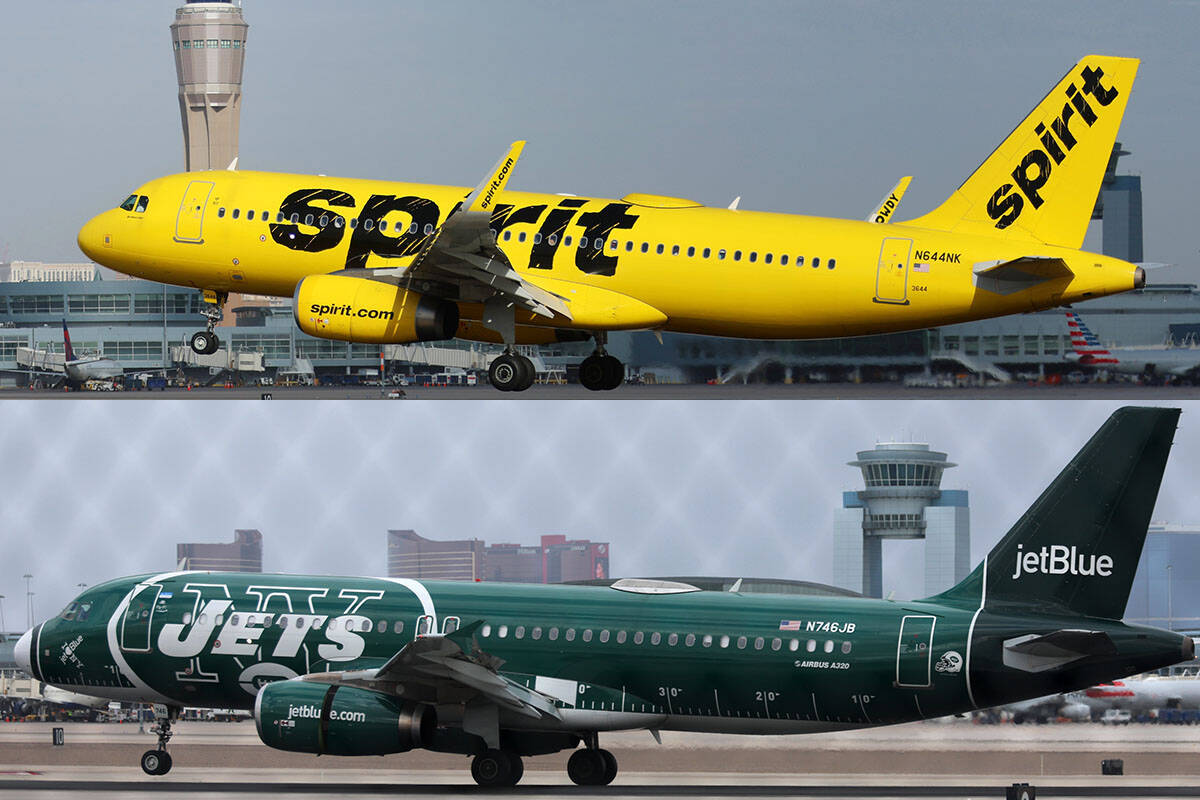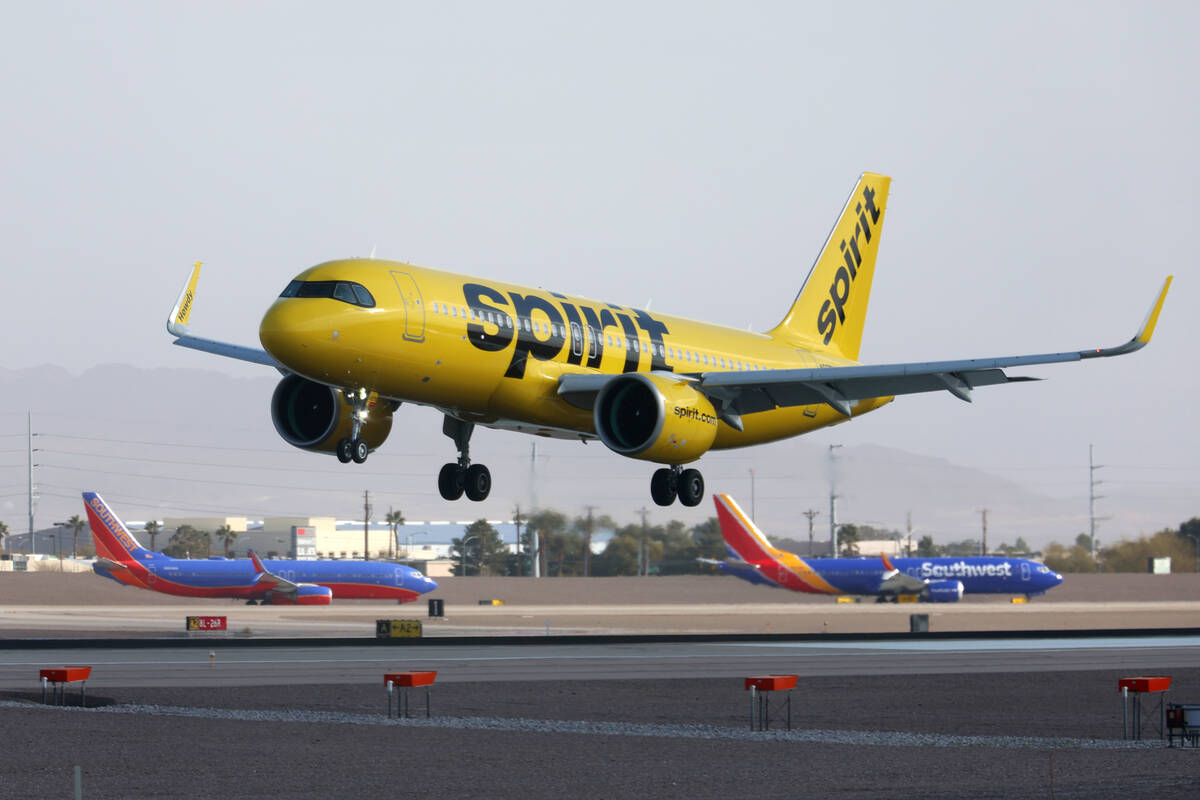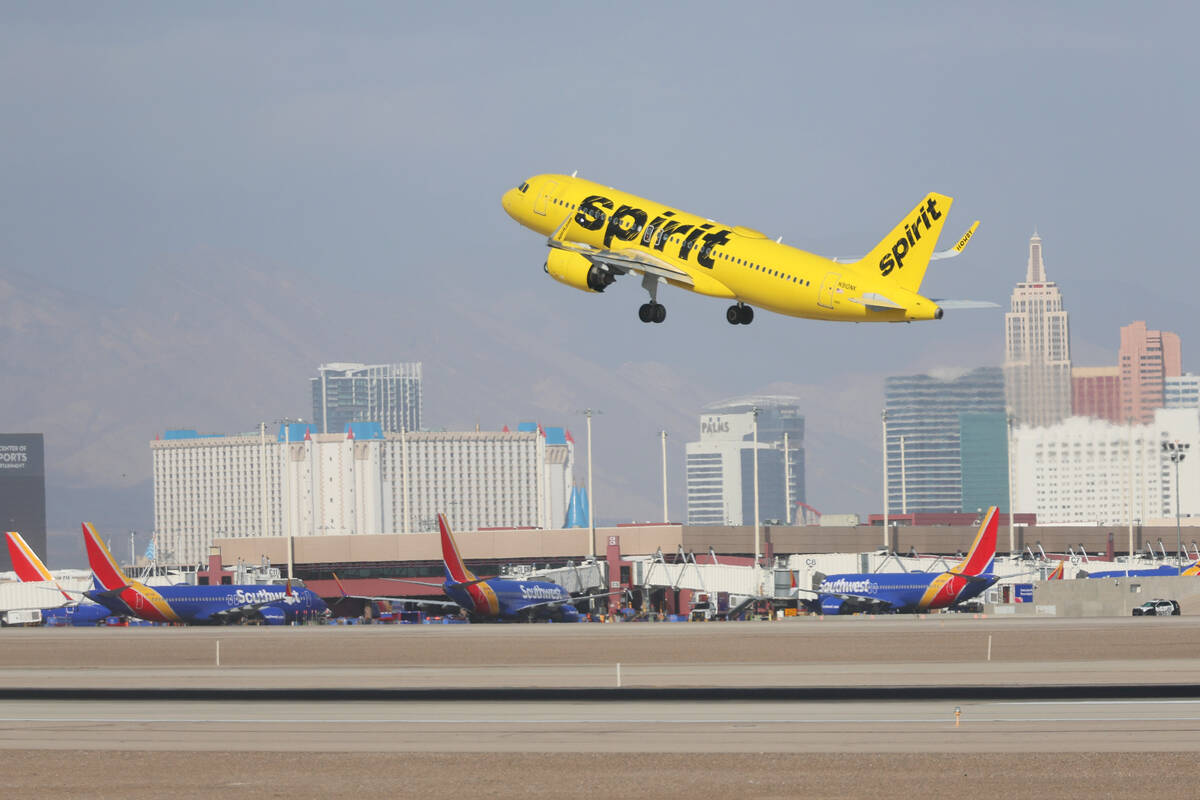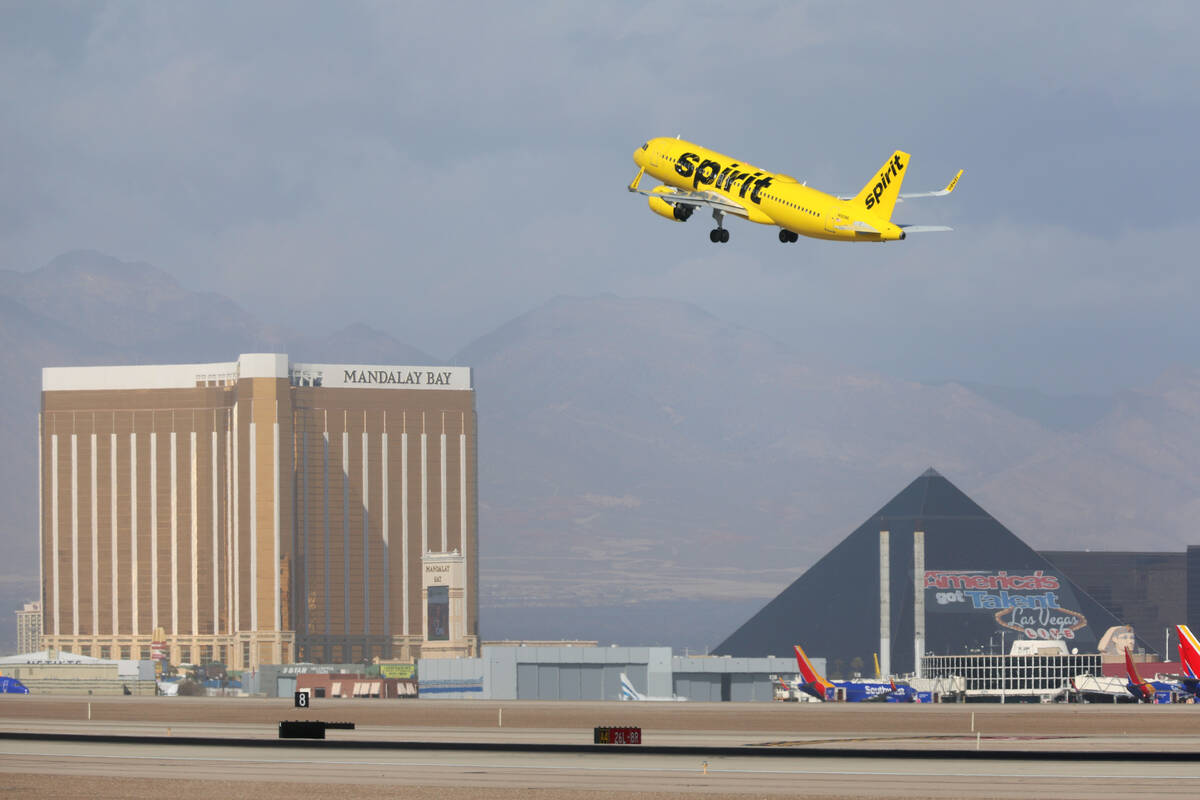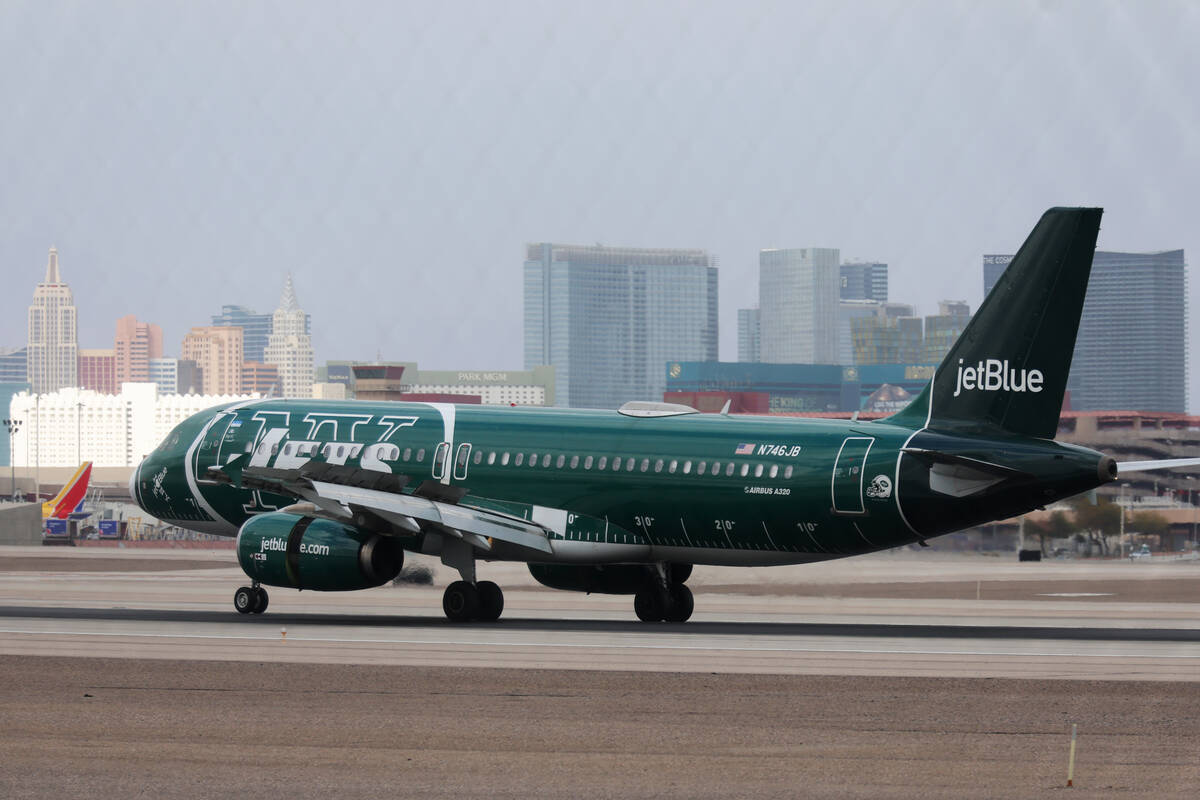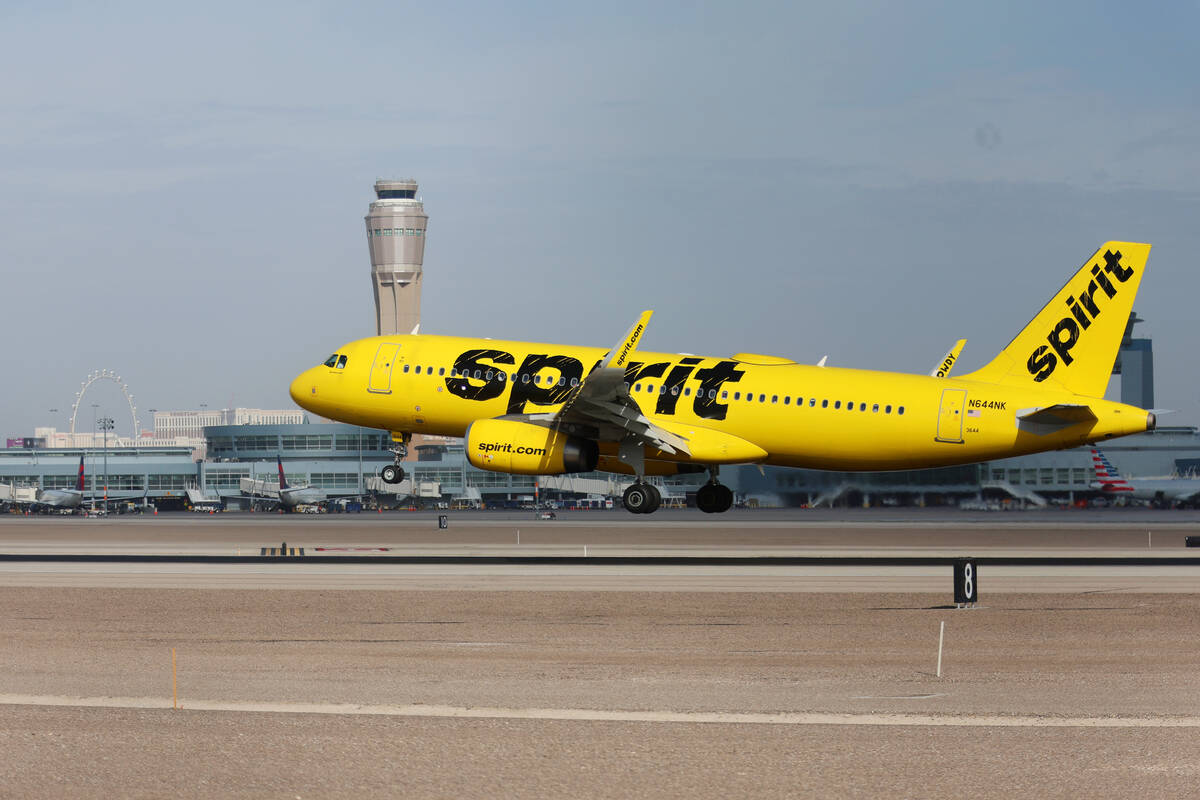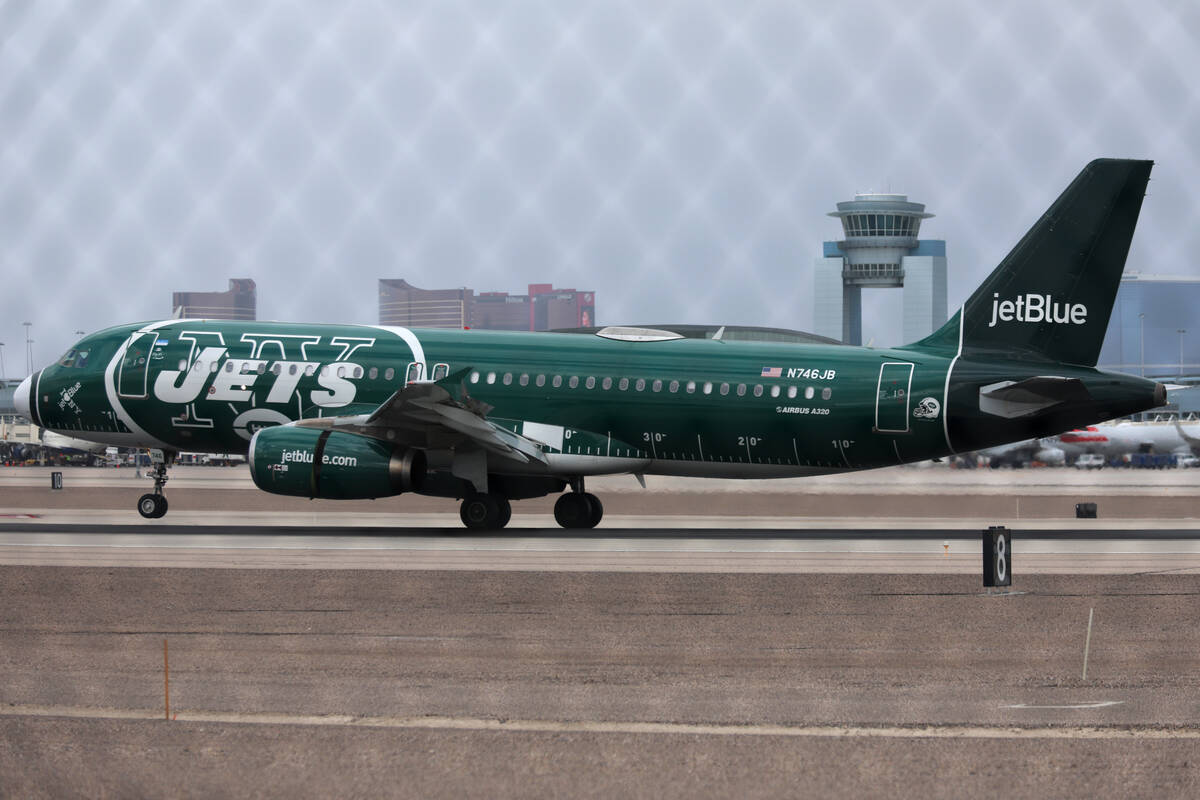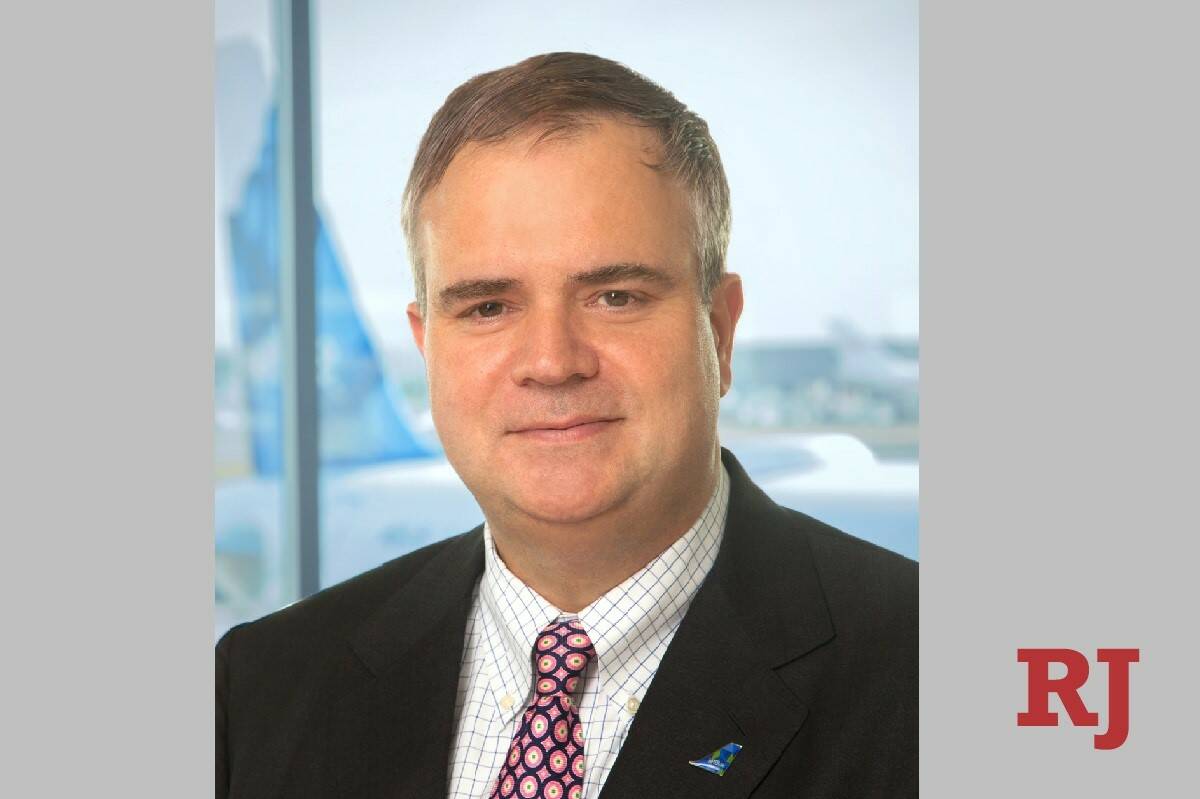JetBlue expects growth in Las Vegas in merger with Spirit
Las Vegas’ success as a popular resort destination is one of the key reasons JetBlue Airways and Spirit Airlines are seeking to merge, the top executives of both companies said in an exclusive interview with the Review-Journal.
“Vegas is one of the main reasons we’re doing this transaction,” JetBlue CEO Robin Hayes said. “We want to have a bigger presence in Vegas. We think the combined airline has very broad appeal, from price-sensitive leisure customers to people traveling for conferences and incentives, and paying a lot less than they would be paying on the legacy airlines.”
JetBlue, currently the No. 9 domestic carrier at Harry Reid International Airport, has nine daily flights to four destinations. It flew 915,188 passengers in 2022, a 22.4 percent increase from the previous year. Spirit flew 7.3 million passengers in 2022, a 54.2 percent year-over-year increase.
If the $3.8 billion JetBlue-Spirit merger, first announced in July 2022, is approved by regulators, the new JetBlue would become the second busiest commercial air carrier serving Reid airport behind Southwest Airlines. It would also be the fifth largest airline in the United States, behind Southwest, Delta, American and United.
But the merger could face opposition from the Justice Department.
Hayes and Spirit President and CEO Ted Christie acknowledged that there were numerous media reports last week indicating the Justice Department next month may move to block the merger.
“If we don’t get that (approval) and they decide to sue us, we have to go to court and win the argument,” Hayes said. “If we’re successful, we can close the transaction and begin the process of moving to a single operating certificate, and that means you have to combine the airlines to a common set of procedures and a common set of training.”
For Las Vegas, that means Spirit would have 196 flights to 41 destinations and JetBlue, nine flights to four destinations. The only destinations currently flown by both airlines are to Los Angeles International Airport and Fort Lauderdale, Florida.
Spirit grew to the West
JetBlue, founded by current Breeze Airways CEO David Neeleman, began operations in 2000 and focused on the East Coast and Caribbean destinations. Neeleman modeled his airline after Southwest, but it grew in popularity when the company added perks and amenities Southwest didn’t offer, including seatback entertainment systems and food service.
Miami-based Spirit, which began operations in 1990, focused on Florida and the Caribbean, but rapidly expanded into the central United States and the West Coast. Christie, who joined Spirit in 2012 and became president and CEO in 2019, said the company sees Fort Lauderdale and Orlando — and Las Vegas — as its biggest opportunities.
“JetBlue has a sizable presence best known in the Northeast, the Eastern Seaboard, Florida and the Caribbean,” Christie said. “Spirit actually brings a few things to the table as well. We’re considerably bigger than JetBlue in the middle part of the country in places like Houston, Dallas, Atlanta, Chicago, Denver and Las Vegas in particular.
“I think there’s a tremendous opportunity in Vegas and in the western part of the United States to create a nationwide carrier of choice. I know Robin is going to be super excited about playing off those assets in ways that will increase competition and provide lower fares for people.”
Among the arguments Hayes and Christie would take to court, if sued, is the overall benefit a low-cost carrier brings to the marketplace when it competes against what they call the “Big Four” legacy airlines.
“We’ll be the fifth largest airline in the United States, but it will be a distant fifth against what is a juggernaut of four airlines dominating the space, controlling pricing, keeping their thumb on the lower cost airlines like JetBlue and Spirit and others,” Christie said.
“This combination flies in the face of that and actually helps the regulators create a narrative around competition that’s good for consumers. So we’re optimistic that the arguments we’ve advanced actually convinced them to proceed as quickly as possible because it’s good for the traveling public. In the event that we don’t get there, we’ll fight the fight and we’ll have plenty of time to mesh the fleets together.”
Christie and Hayes said they expect the new JetBlue would have a 9 percent market share.
Las Vegas benefits
Hayes said the merger would particularly benefit Las Vegas.
“As you bring these networks together and grow them, it’s really one plus one equals three, because you build more connecting opportunities as you grow,” he said. “I look at things like Buffalo-Vegas, for example, and other markets on the East Coast to Vegas.”
He added that because of the “JetBlue effect” — the presence of a low-cost carrier in a market — other established carriers would be forced to lower their fares in order to compete.
That could be true on the Las Vegas-Reno route, which Spirit recently added. Additional flights on the route could force Southwest to lower its prices. Allegiant Air also flies that route, but not as frequently as Southwest.
Transition to take years
The transition of Spirit planes to JetBlue colors would take years to complete, but is expected to be a relatively easy process. Both fly twin-engine Airbus A320 jets and their higher-capacity variant, the A321.
Spirit currently has 194 planes in its fleet with 124 on order. Hayes, who joked that he and Christie should get into the painting business with all the conversions that would need to be done, said it takes roughly 30 days to convert a Spirit jet to JetBlue specifications.
Among the conversions would be transitioning some jets to JetBlue’s “Mint” product, a premium cabin amenity featuring business class and lie-flat seats for transcontinental and some Caribbean flights. Hayes said the service is popular on existing Las Vegas routes to and from Boston and New York.
If the merger is successful, the new JetBlue would also increase the number of employees based in Las Vegas. Spirit already has Las Vegas crew bases. Hayes said the merger would likely result in having 1,300 employees here.
Contact Richard N. Velotta at rvelotta@reviewjournal.com or 702-477-3893. Follow @RickVelotta on Twitter.



